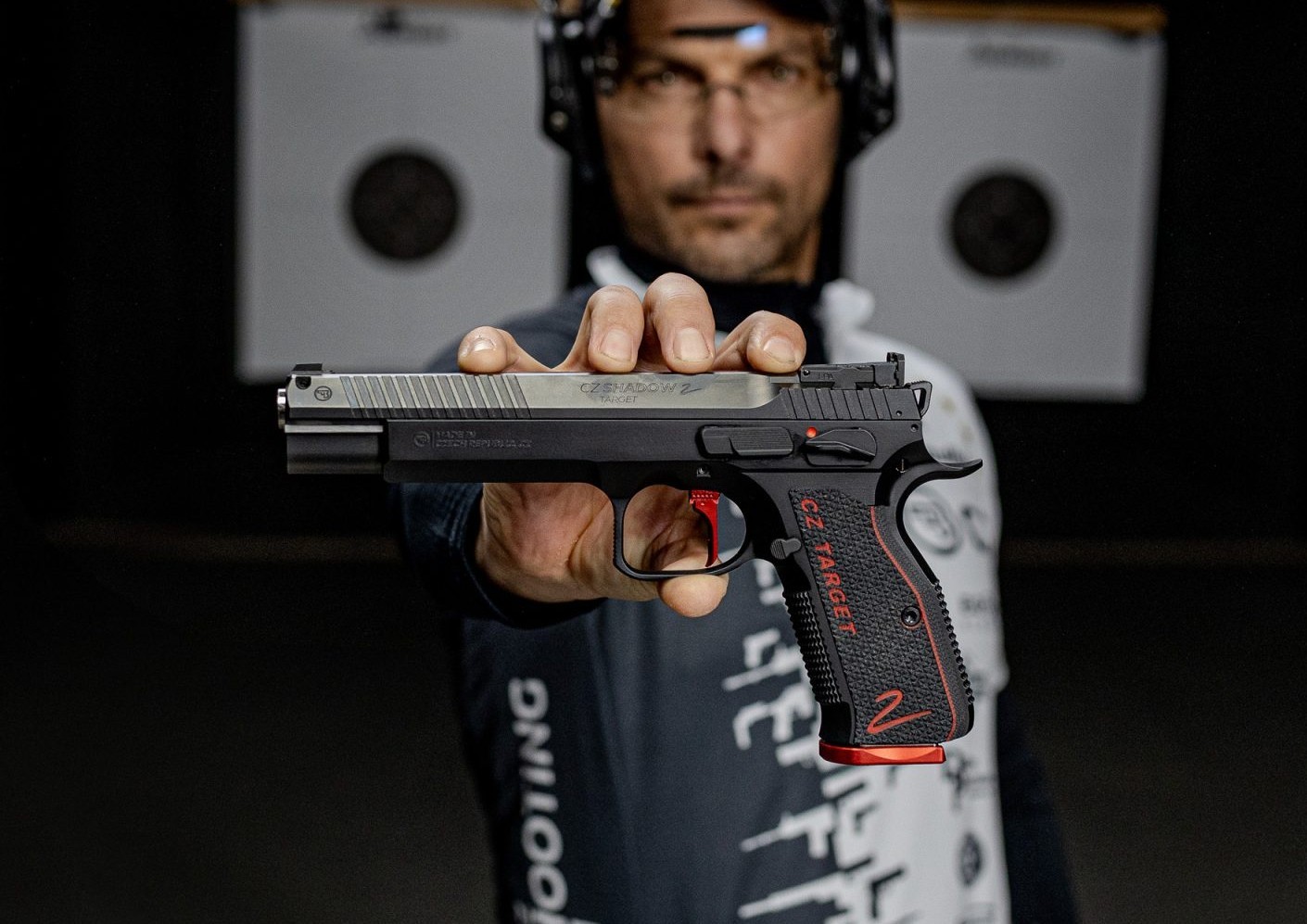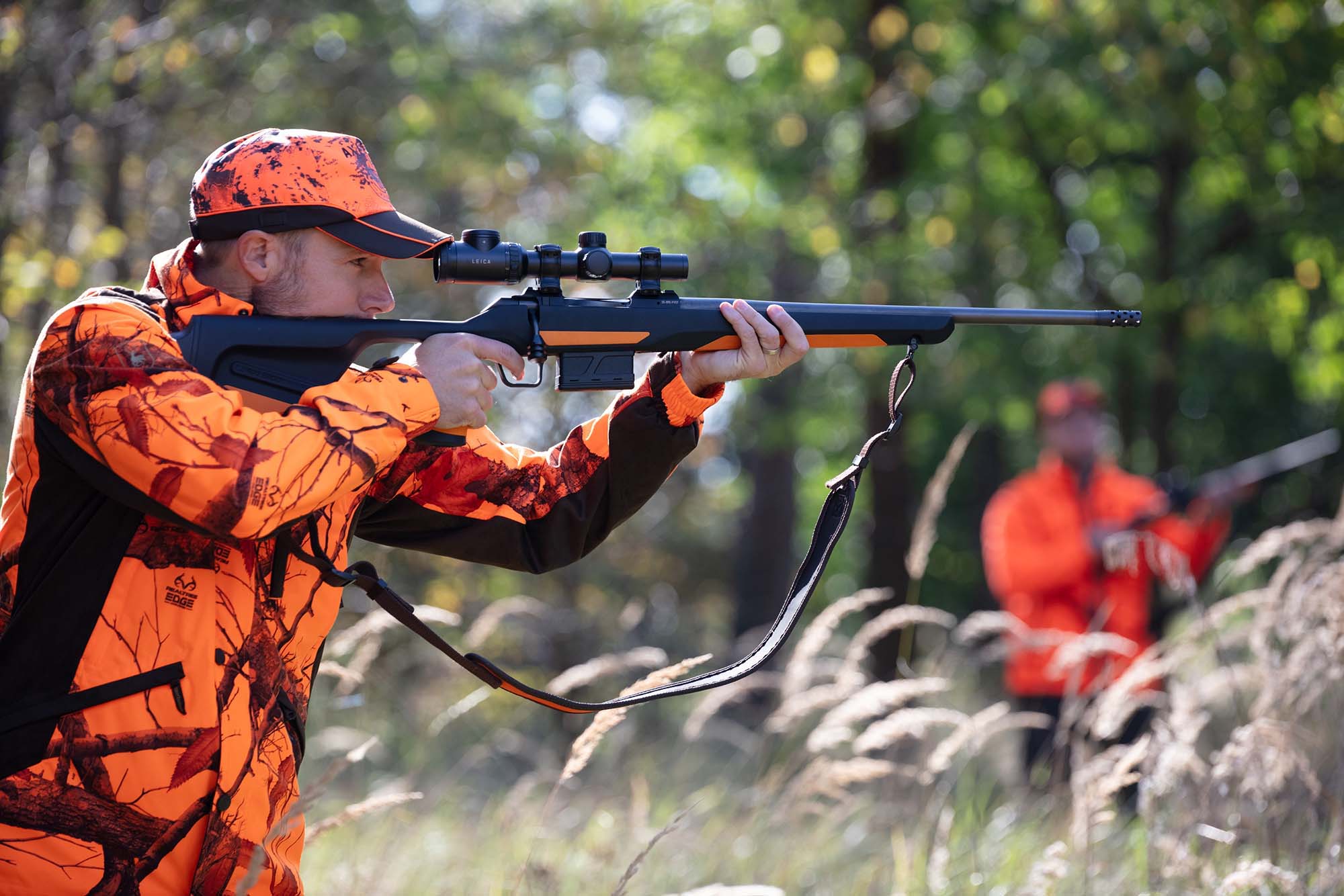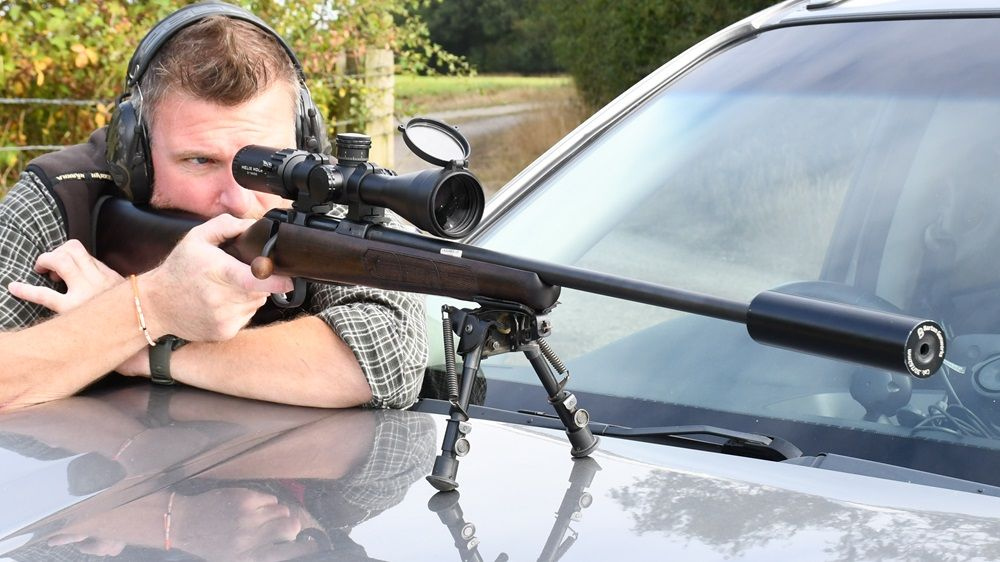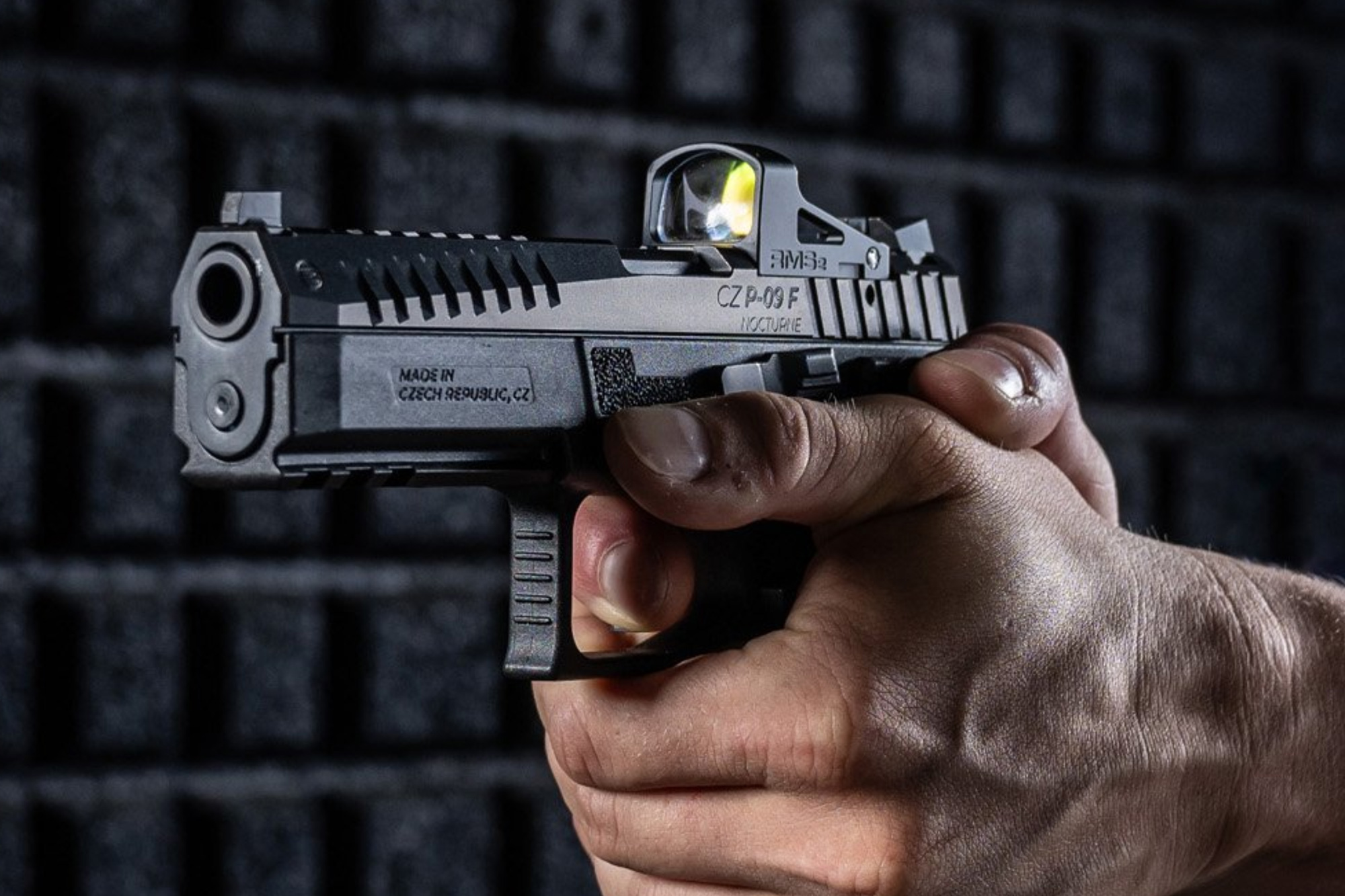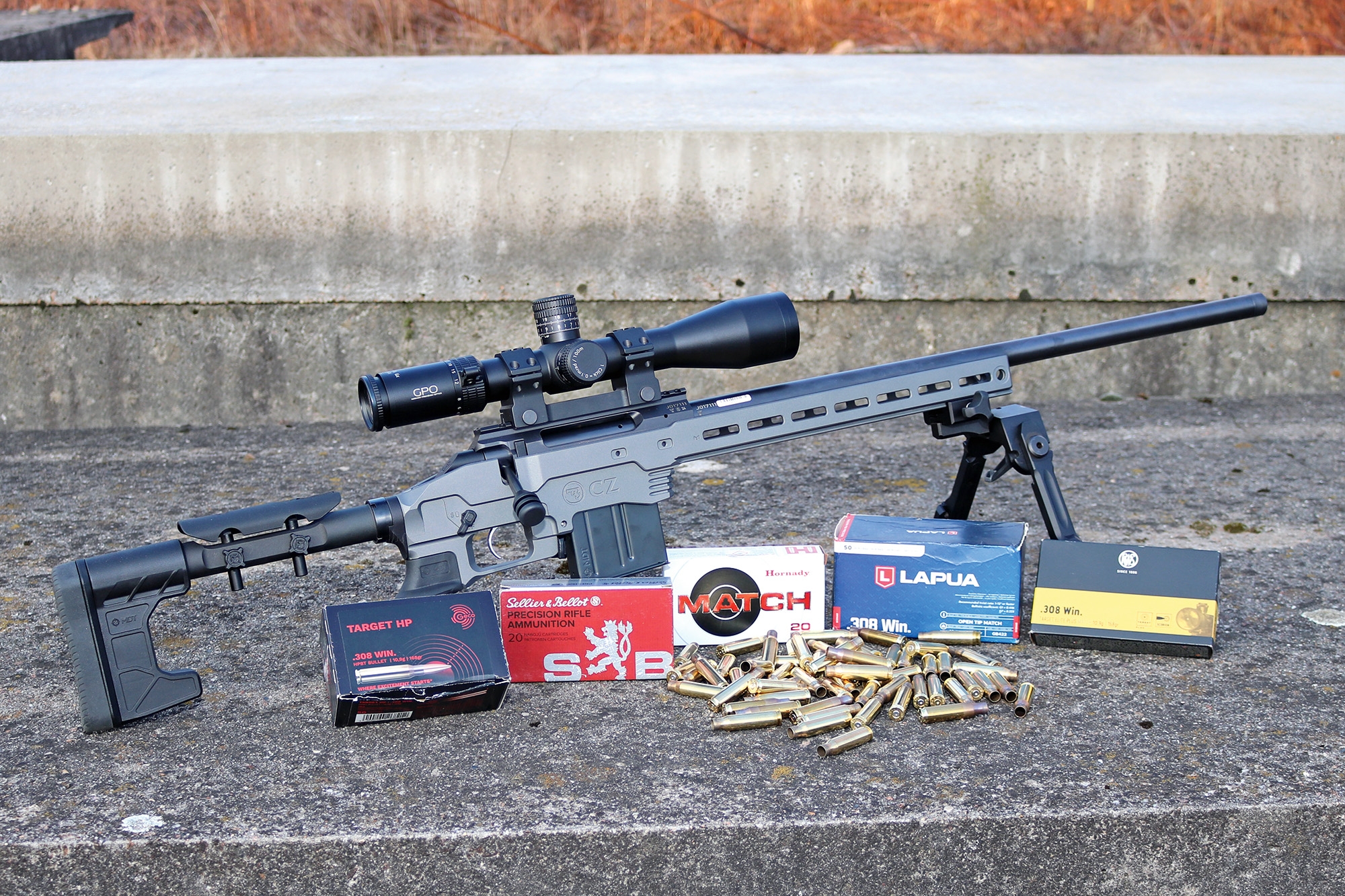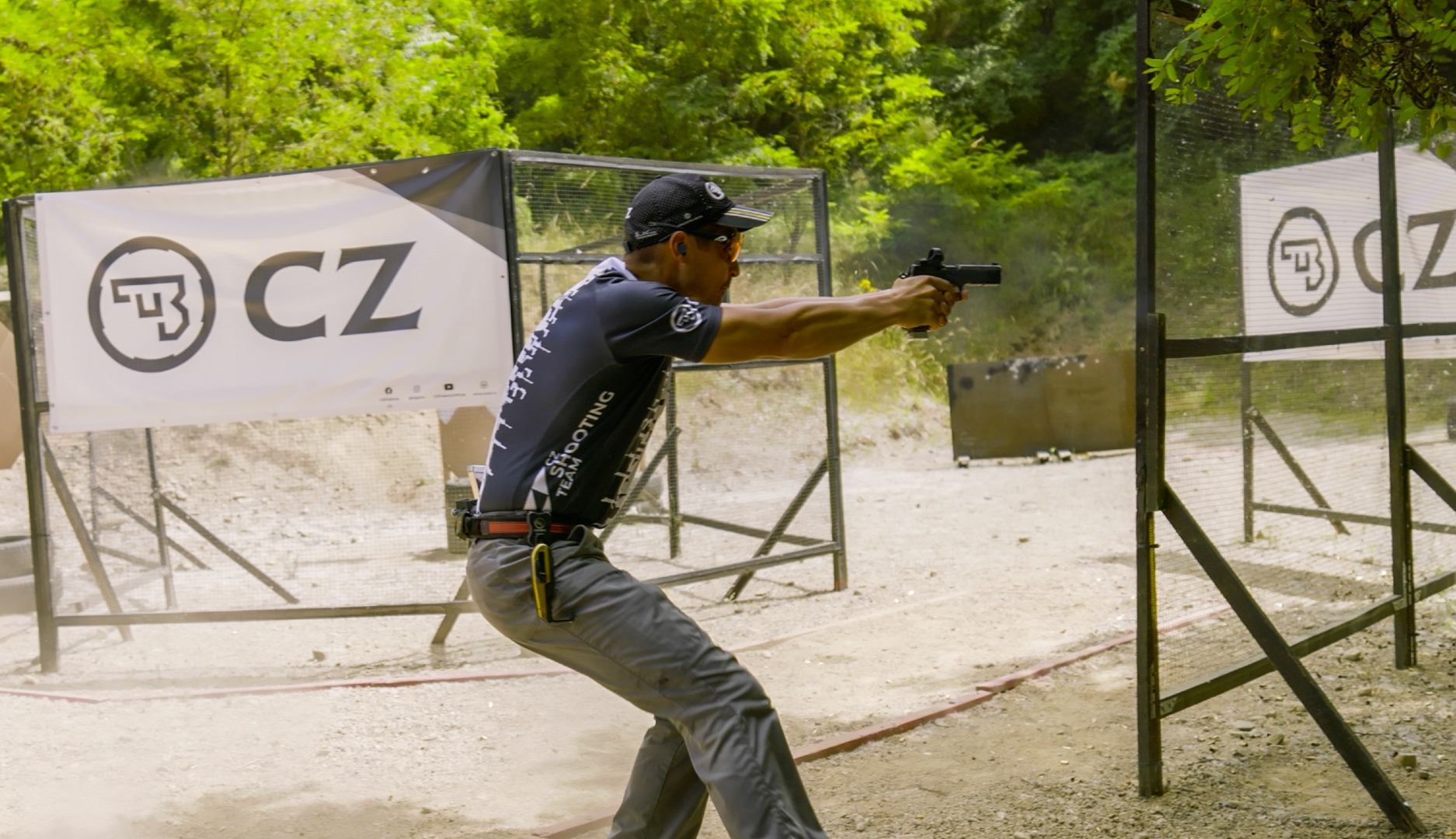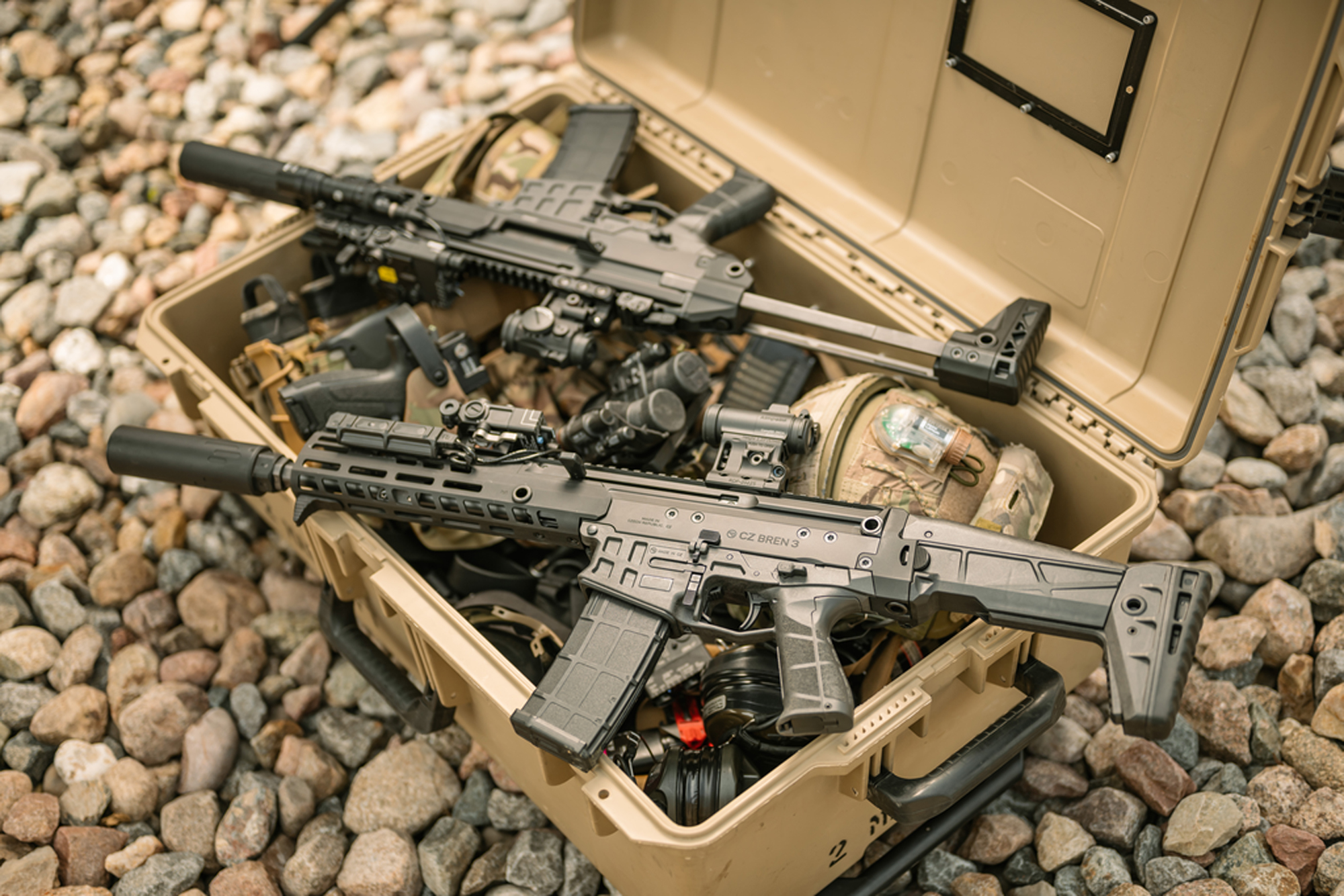Article also available in other languages

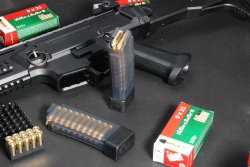
Is there a difference between “Skorpion” and “Scorpion”? The pronunciation is the same and the letter k and c are a spelling difference. Not much, but the actual difference between the CZ Skorpion and CZ Scorpion is huge as the two weapons are completely different.
Perhaps it would be easier if we used their full names: the old Skorpion, infamous in Italy for the bloody events of “Anni di piombo” (the Years of Lead) is called CZ 61 Skorpion, while the more modern version is called “CZ Skorpion Evo 3”.
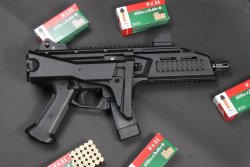
But what’s the actual difference? Now that we’ve established the differences when it comes to the name, we can move on to the more important characteristics.
We are describing a gun that can be used as a PDW (Personal Defense Weapon), being somewhere between a simple hand gun and a sub machine gun. The latter category is present in its rather large dimensions, even though smaller than typical models (41 centimeters in length and a little over two kilos and a half of weight).
Also, its magazines allow large autonomy of fire, unlike most handguns. All things considered, it took after its sub machine predecessors.
Scorpion Evo can be found in its automatic version (EVO 3 A1) or the semi-automatic version proposed to the civilian markets (EVO 3 S1): the first one has single shooting mode, three-round burst and full-auto, while the civilian one represents the semi-automatic gun without the possibility of transforming mechanisms.
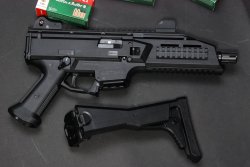
For obvious reasons, we will examine the semi-automatic gun, approved by Gun Association Gardone VT and sold and officially classified in Italy. That reminds us: there was a great confusion created after the infamous Catalogue was published; our EVO was classified three times – the positions being 20, 278 and 440, all in 2013.
An interesting feature of the gun is its folding, adjustable and removable stock; when extended the total length is 66 cm and EVO is transformed into a shoulder gun: the stock dimensions allow a neat heft and the use of the aiming devices, which cannot be said for many Personal Defense Weapons.
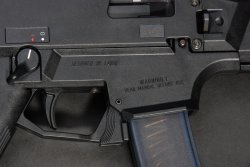
The manufacturing company is the great Česká Zbrojovka di Uherský Brod (CZ-UB), famous for its large group of loyal customers, but the roots of our gun aren’t Czech but Slovakian, another territory that has serviced various gun lovers for many years.
This origin is very subtly represented: on the right side of the polymeric frame, you can see the plate that says “designed by Laugo” -- Laugo being the designer and the name used by the Slovakian company (the ZVS) that created the prototypes, before handing over the projects to the CZ.
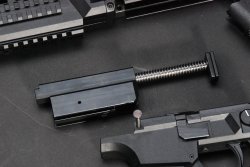
Aside from the possibility to shoot with a closed bolt and an internal hammer, the mechanical structure of EVO is very classical, similar to the one of a regular submachine gun of the second generation with the bolt positioned posteriorly, behind the barrel. The telescopic system, considered useful for eliminating the burns during full-automatic shooting, is not necessary here. If you think about it, we’ve been told that a modern gun with a blowback mechanism and a rather large bolt needs a telescopic bolt but in the last years, we’ve seen personal defense weapons with removable plunger behind the chamber, like for example HK USC. The entire structure is the same besides the fact that it has a small anterior plunger: evidently you don’t need to do much in order to make a gun controllable and usable even with full-auto without useless complications.
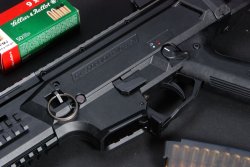
Smart and modern construction methods have led to the frame being formed by uniting two very simple shells with seven small screw bolts and matching nuts. The two shells are made of a polymeric material which is extremely hard, at least from the outside. The material is so hard we are unsure of the internal structure of the two shells. We believe that the bolt slides could be made of thin metallic laminate and the rest of the synthetic material on top: there are some strange circular signs that seems to be a result of junction and a metallic plate holds an identification number and seems to come out of the polymer which lead us to confirm this theory but we are not able to give you a definite answer because it would have involved cutting the surface which is not a standard procedure for a trial gun, kindly provided to us by Legion Italy of Carrara.
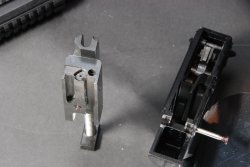
Bolt was very well made, with clean surfaces and smooth edges; the surface in contact with the base shows a lowered part, the surface of a long and rather large extractor and a passing hole whose purpose we honestly don’t seem to understand.
Bellow, we can see the surface of blocking piston of the firing pin: the passive safety was very well designed and the gun has a firing pin safety which can be eliminated by pushing the trigger when a lever is raised before the hammer snap.
When it comes to EVO safeties, aside from the automatic firing pin safety, we can also find a manual lever in two positions, one being near the thumb and the ambidextrous one. The two positions are Fire and Safety and this is how the automatic bolt gets blocked as well.
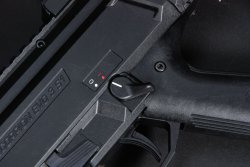
The only issue is the double control options which result useful on one side but almost bothersome on the other: for example the right-handed shooters will find the right snap while in firing position bothersome because it touches the index finger which operates the trigger and we imagine the left-handed shooters would have the analogue problem.
Aside from the expulsion port, located on the right side, EVO is very handy for both right and left handed shooters and all the controls can be found on both sides; all the controls can also be found on the inferior removable block that we will explain later, excluding the activating bolt snap but it is easily reversible.
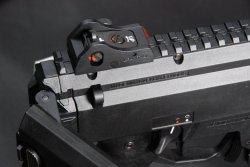
The aiming devices are on the long Picatinny rail which is on top of the receiver: a classical sights that can be adjusted for windage and elevation and a classical front sight, protected by big lateral wings made in Italy by LPA. This is standard but given the fact that they are on the rail, it is very easy to remove, replace or customize them with different products.
In order to buckle the sling, we can use the anterior attachment that can be found on both sides, with a big metal ring attached to it: it looks like a safety of a hand-bomb and the first time you see this gun you have a strange feeling. On the back side you can find an eyelet which is available on the left side only.
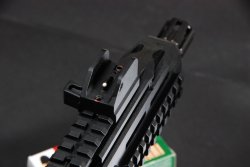
We we’ve also analyzed the stock of this rather large gun. As we’ve mentioned in the beginning, it can be extended, folded and removed: let’s see just how this is done.
First of all the stock is made of a synthetic material: the external part has a second component supports the stock. There is a lever in front of it that looks like the one found on M4s in 223. By pushing it, you can extend the stock which is then fixated to fire.
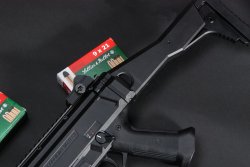
If you push the big semi-cylindrical button on the bottom of the stock on the left side, you can detach the frame handle and rotate it towards your right side in order to fixate it. When the handle is bent, it is positioned under the expulsion port so as not to interfere with the gun’s functioning, and in this position you can find another button which allows you to remove the entire stock from the frame, in this way drastically reducing the transversal size of EVO.
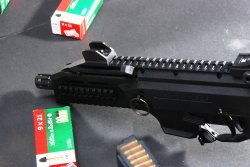
The disassembly of the gun is actually very easy: the selector lever in firing position should be stopped with the charging handle and you can block it by lifting it; then, you can remove the pivot underneath the plate with what looks like a hand-bomb ring, and then you can lower and remove the entire magazine housing which contains the entire shooting mechanism, the safety and the hold-open lever, which can be easily isolated and cleaned.
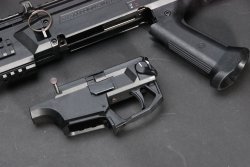
If you put your finger in the opening created after the removal of the inferior group you can go a little backwards and the bolt can be removed from bellow, in this way revealing the parts that need to be fixated: in the beginning you can be a little afraid to push the recoil spring of the heavy bolt because you may think it will splash who-knows-where but its extraction is actually easy and it is not dangerous; the recoil spring is well fixed to the bolt and it is a polymeric shock absorber.
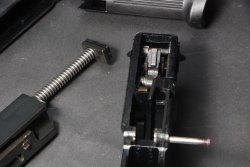
Just like the USP we quoted, the bolt has a rectangular section and can be put in the right position by the walls of the upper frame and the lower group. The bolt has completely smooth sides but there are special grooves that prevent the accumulation of sediments and rubble on the frame sides.
The handle remains on the inside of the polymeric shells, just like the barrel, fixed posteriorly to a big metal block, held by two half shells of the frame; in order to remove the barrel you will need particular utensils so it’s not worth trying.
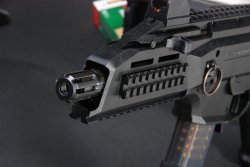
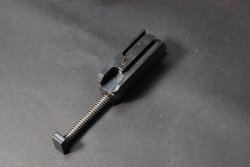
If you look at the muzzle, the barrel has a birdcage-shaped muzzle compensator, easily removable if you have a laminate catch that can hold it still; in this way you can set other compensators and opening brakes and if allowed, a gun silencer or suppressor, on EVO.
EVO hand grips are very handy and rather high: they are set by a rail slot to the frame and it is fixated with another passing small screw bolts: the manual shows the possibility to move it closer or further a few millimeters from the trigger guard, allowing you to get a better hold of the gun.
The gun comes with two transparent polymer magazines with the autonomy of twenty cartridges. The magazine is double-column and you can easily insert the cartridge. The magazine extraction is very easy as well.
In conclusion, the CZ Scorpion EVO is a modern and ergonomic gun that has already had a lot of success, especially in military use.
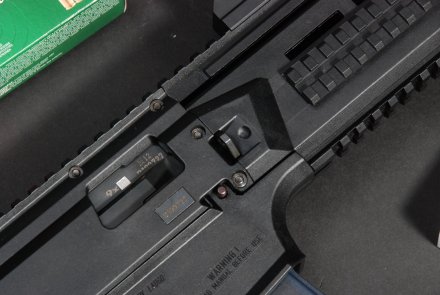
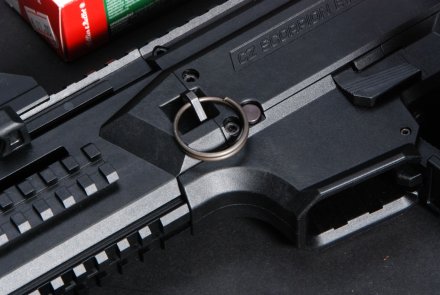
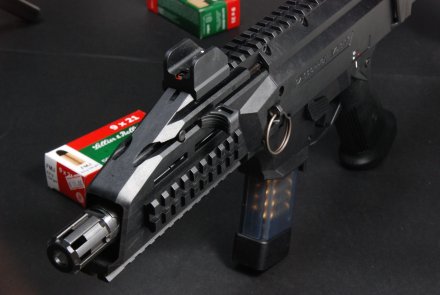
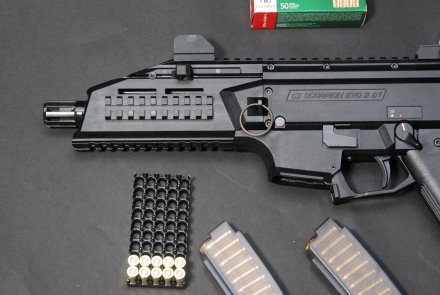
CZ Scorpion EVO S1
Technical Information
| Manufacturer | Česká Zbrojovka di Uherský Brod (CZ-UB), Czech Republic, www.cz-usa.com |
Model | EVO Scorpion S1 |
| Type | Sub-machine gun |
Caliber | 9x21 IMI |
System | Semi-automatic - with blowback |
Barrel | 196 mm |
Percussion system | Internal hammer |
Magazine | Double-column with capacity of 20 cartridges |
Shooting system | Single action |
Stock | Adjustable, foldable and removable |
Aiming devices | Picatinny rail – removable LPA front and rear sight |
Safeties | Manual ambidextrous; automatic firing pin safety |
Weight | 2.700 g |
Length | 410 mm with removed or bent stock; 660 mm with stock fully extended |
Materials | Carbon steel for the barrel and bolt; the frame is made of techno polymer |
Finish | Black matte |




